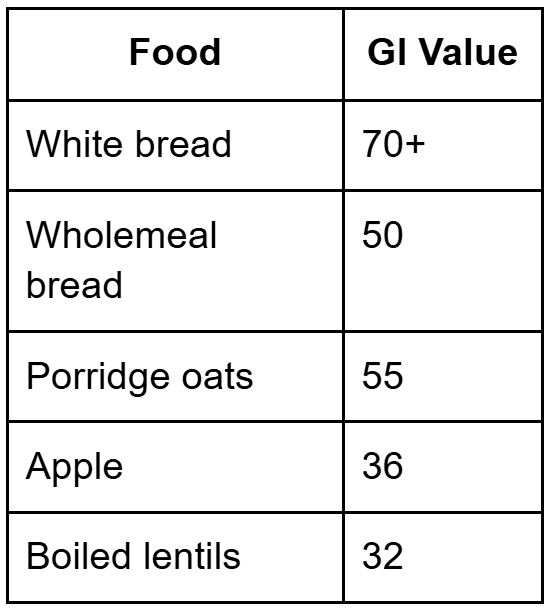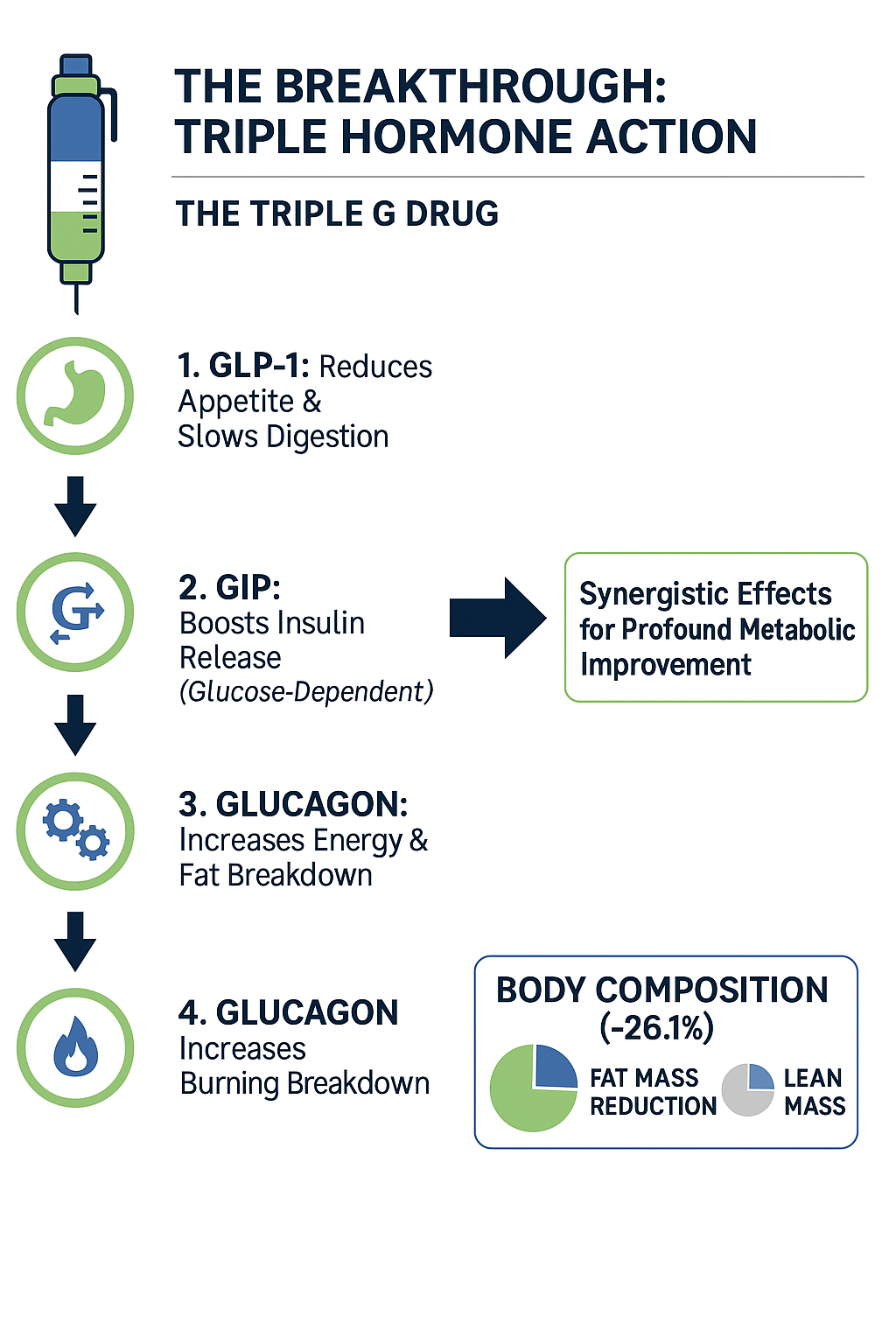
Healthy eating is fundamental to maintaining well-being, but with an overwhelming array of nutritional advice available, knowing where to start can be a challenge. One tool gaining attention for its simplicity and effectiveness is the Glycaemic Index (GI). This scale helps us understand how different foods influence blood sugar levels, offering insights into healthier eating patterns.
The GI is not just about blood sugar; its implications span weight management, energy balance, and even hormonal health. For women, these insights can be transformative, aiding in the management of conditions like PCOS (Polycystic Ovary Syndrome) and gestational diabetes, while also reducing the risk of chronic diseases.
This guide delves into the GI, explaining its relevance, practical applications, and its role in empowering women to make informed food choices. Let’s explore how understanding the GI can pave the way for better health and vitality.
What is the Glycaemic Index (GI)?
The Glycaemic Index is a numerical scale (0–100) that ranks carbohydrate-containing foods based on how quickly they raise blood sugar levels. Foods are categorised into three groups:
- Low GI (0–55): Slow release of glucose, promoting sustained energy.
- Medium GI (56–69): Moderate impact on blood sugar.
- High GI (70+): Rapid spike in glucose, often followed by a crash.
For instance, pure glucose has a GI of 100, making it the benchmark against which all other foods are measured (Diabetes UK).
High GI vs Low GI Foods
- High GI foods (e.g., white bread, sugary drinks): These can lead to energy fluctuations and cravings, making it harder to maintain stable blood sugar levels.
- Low GI foods (e.g., lentils, apples): These provide a steady release of glucose, enhancing satiety and helping regulate hunger.
Myths About the GI
Misconceptions abound, such as “all carbohydrates are bad” or “low GI foods are always healthy.” While the GI is a valuable tool, it should be used alongside other nutritional considerations, such as fibre, protein, and overall food quality.
Why is the GI Important for Women?
Women’s unique health needs make the GI particularly valuable. Here’s how understanding it can help:
Weight Management
Low GI foods, such as whole grains and legumes, help control appetite and reduce cravings, making them allies in weight loss or maintenance efforts. Research shows that diets rich in low GI foods are linked to lower BMI (NHS).
Hormonal Balance
For conditions like PCOS, regulating blood sugar is crucial. High insulin levels, driven by high GI foods, exacerbate hormonal imbalances. A low GI diet can mitigate these effects and support hormonal health (NICE guidelines).
Energy and Mood
Low GI foods provide sustained energy, reducing mid-day fatigue and improving mood stability. For busy lifestyles, this can make a significant difference in productivity and overall well-being.
Pregnancy
Women with gestational diabetes benefit immensely from a low GI diet, which helps stabilise blood sugar and ensures a healthier pregnancy for both mother and baby (NHS).
Long-Term Health
A diet rich in low GI foods lowers the risk of chronic conditions like type 2 diabetes and cardiovascular disease. These diseases disproportionately affect women, particularly post-menopause, making prevention strategies critical.
How to Use the GI for Better Food Choices
Practical Tips for Incorporating Low GI Foods
- Swap white bread for wholemeal bread.
- Replace white rice with brown rice or quinoa.
- Opt for porridge oats instead of sugary cereals.
- Choose apples or berries over fruit juices.
Balancing Meals with Moderate GI
Combining low and high GI foods can balance the overall impact on blood sugar. For example:
- Pair a baked potato (high GI) with grilled salmon and a side of broccoli.
- Add hummus (low GI) to a slice of wholemeal toast (medium GI) for a balanced snack.

Tips for Eating Out
- Opt for grilled dishes over fried ones.
- Request wholegrain options where possible.
- Avoid sugary drinks; choose water or herbal teas instead.
Factors Affecting the GI of Foods
Understanding the factors influencing a food’s GI can help you make better choices:
- Processing: Refined foods like white flour have higher GI than wholemeal options.
- Cooking Methods: Steaming or boiling retains a lower GI compared to frying or roasting.
- Ripeness: A ripe banana has a higher GI than a green one.
- Fibre Content: High-fibre foods, like vegetables and legumes, slow glucose absorption.
Glycemic Load (GL): A More Complete Picture
While the GI is helpful, it doesn’t account for portion sizes. Enter Glycemic Load (GL), which considers both the GI and the carbohydrate content of a serving. For example:
- Watermelon: High GI but low GL due to its low carbohydrate content per serving.
- Wholemeal pasta: Moderate GI but higher GL when consumed in large quantities.
Using both GI and GL offers a nuanced understanding of a food’s impact on blood sugar.
Beyond the GI: Other Considerations for Healthy Eating
The GI is just one piece of the puzzle. A healthy diet should also consider:
- Calorie intake: Align with activity levels and goals.
- Macronutrient balance: Include a mix of protein, healthy fats, and carbohydrates.
- Micronutrient intake: Prioritise foods rich in vitamins and minerals.
- Dietary fibre: Crucial for digestion and heart health.
Encourage diversity in your diet by focusing on whole, unprocessed foods and incorporating a variety of nutrient-dense options.
Seeking Professional Guidance
For tailored advice, consult a registered dietitian or nutritionist. These professionals can create a personalised plan based on your unique needs, especially if managing conditions like PCOS or diabetes.
Resources:
Conclusion
The Glycemic Index is a practical and accessible tool that can empower women to make informed food choices. By prioritising low GI foods, you can improve energy, balance hormones, and reduce the risk of chronic diseases. However, the GI is most effective when combined with a holistic approach to nutrition.
Why not start today? Experiment with adding low GI foods to your meals and observe the positive changes in your energy levels and overall health. For further support, download our Low GI Food List and Meal Plan to begin your journey toward better eating habits.
Take charge of how you look and feel.
Backed by science. Guided by experts.
SheMed’s medical weight loss programme combines expert care and science-backed treatment to help you feel and look your best — for life.
SheMed’s medical weight loss programme combines expert care and science-backed treatment to help you feel and look your best — for life.
The content on the SheMed blog is provided for general informational and educational purposes only. While SheMed provides professional weight loss services and strives to ensure the information shared is accurate and up to date, we make no representations or guarantees as to its accuracy, completeness, or timeliness. This content should not be taken as personal medical advice or a substitute for consultation with a qualified healthcare provider. Always speak with your doctor or licensed medical professional about your individual health or medical needs before starting any new treatment or programme. Never disregard or delay seeking professional medical advice because of something you have read on this site. SheMed is not responsible for any actions you may take based on the information provided in this blog.
Subscribe to our Newsletter
Thank you! Your submission has been received!
Oops! Something went wrong while submitting the form.





